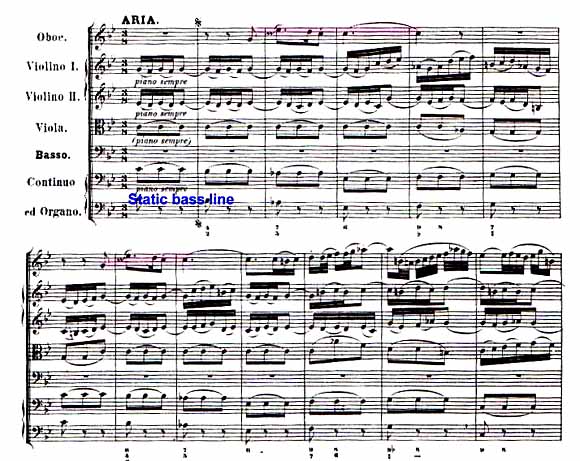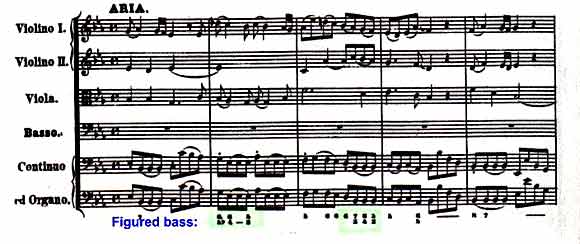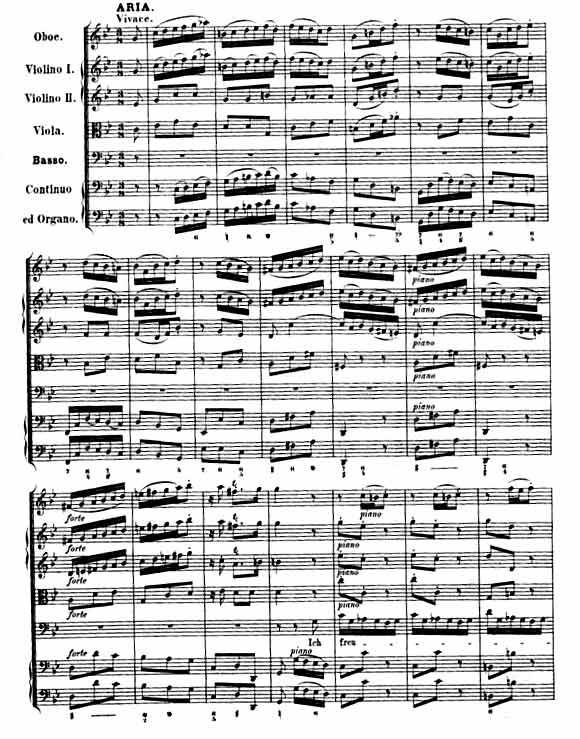This solo cantata for bass voice was first performed in Leipzig in 1727 for the Feast of the Purification of the Blessed Virgin Mary. It is one of five cantatas written for this now little-known feast day.
Given the ritual significance of the feast for the Holy Family, and given the multiple references both to Mary’s purification and ritual purification in general in the Bible, it might surprise readers to learn that the anonymous libretto did not find its source in the Bible. Indeed, there is no biblical text here, though the first movement uses text similar to the words of Simeon, addressing God after having held the infant Jesus in his arms (Luke 2) [similar words or phrases are marked in the English translation of Cantata 82 and Simeon’s song]:
| German text for BWV 82 | English translation for BWV 82 | Simeon’s song in Luke 2 |
| Ich habe genug. ich habe den Heiland, das Hoffen der Frommen, auf meinen begiergen Arme genommen; ich habe genug! Ich hab ihn erblickt, mein Glaube hat Jesum ans Herze gedrückt, nun wünsch ich noch heute mit Freuden von hinnen zu scheiden. Ich habe genug! |
I have enough; I have taken the Savior, the hope of the Gentiles, into my yearning arms. I have enough; I have seen him, my faith has held Jesus to my heart; now I desire but even today to depart with joy from here. I have enough! |
Now, Master, you can dismiss your servant in peace; you have fulfilled your word. For my eyes have witnessed your saving deed, displayed for all the peoples to see, a revealing light to the Gentiles, the glory of your people Israel. |
The second movement later mentions Simeon by name. The Catholic ritual for this feast, in fact, mandates singing of the ‘Song of Simeon’ frequently called “Nunc dimitiis.” Bach may have been aware of this, even though he was not working in a Catholic Church, because of the proximity of Catholic and Lutheran congregations in Germany.
Knowing that this ritual was an important one in the life of the young Jewish mother Mary, it might surprise listeners to find the somber tone. In Bach’s “defense”, however, we should remember that the presentation of the Christ Child in the temple was his first appearance “in His father’s house,” something not to be taken lightly, given the Child’s origin; furthermore, Christ’s presentation in the temple is but the beginning of his journey towards an ultimately painful death for the sake of humankind. This anticipation of death – whether Christ’s or our own – is a common textual theme in Bach’s works, especially the cantatas.
One might also consider the opening movement as reflecting the gentleness of Mary, especially in the lilting moderately slow 3/8 meter, and with a scoring of strings, continuo, and solo oboe. The first movement is an expansive aria in which the oboe plays a prominent role – perhaps even more so that then solo bass voice. With an extensive, poignant opening which later also serves to close the movement, plus numerous other intricate interpolations in the aria, the movement is almost an oboe concerto with an obbligato vocal part, rather than an aria with an obbligato oboe. Both the oboe and solo vocal parts are based on the same opening motive, a rising minor sixth, from G to E-flat, seen here at the very first oboe entrance, and recurring numerous times in the rest of the movement. [NOTE: Even though there are only two flats in the key signature, this piece is strongly rooted in C minor. In modern times, we’re used to seeing C minor with three flats, but Bach here employs a partial signature, a carry-over from Renaissance times when the major/minor tonal system didn’t yet exist. Partial signatures appear in Bach’s works only in minor key pieces, and it is usually the 6th degree of the scale, which could be lowered or raised depending on the melodic and harmonic context, which Bach does not represent in the key signature.

In this example, you’ll also note the relatively static bass line – sure, it moves from one measure to the next, but it is moving at a considerably slower pace than we’re used to seeing in Bach’s works, where the walking bass line tends to create a feeling of perpetual motion.
Like the first movement, the bass’s next aria (movement three, after a short recitative), also begins with a melodic line introduced first in the orchestra. I’m not familiar with all of Bach’s works, but it strikes me as unusual (at least in the Baroque) that this occurs twice in two arias – two movements beginning with long orchestral introduction, which introduce the vocal melody well before the voice enters. In both cases, that main melody becomes a ritornelo for the orchestra throughout th rest of the work, filling in the space between vocal entrances, and also recurs at other times in the vocal line.
The character of this second aria, however, is different form the first. It is set in E-flat major, the relative major key, and in 4/4, though still in a relatively slow tempo. The bass line is more active, though each measure continues to feature some repeated notes. Here, however, you can tell by the figured bass that even when the bass notes repeat, the chord structures change; thus, there is less of a feeling of suspension in this movement than there had been in the previous.

Bach’s second wife, Anna Magdalena, copied this aria, and its preceding recitative, into her second musical notebook. These volumes are a microcosmic treasure trove of Bach’s output, including numerous simple minuets fro the beginning pianist as well as more challenging partitas and suites, and miscellaneous vocal movements.
In the final aria (following another recitative), Bach breaks his pattern of the orchestra introducing what would become the vocal melody. This movement is distinct from the other two in many ways apart from this, however. Finally, Bach pushes the tempo; the C minor tonality returns, but the solemnity of the opening movement is long gone. The oboe returns, but in a more supportive role than previously. Each section of the aria (it is written in a modified da capo form) begins with the word “ich freue”, I rejoice, making this the dominant sentiment throughout. The florid phrases enhance this feeling.

Bach must have liked this cantata, as he re-scored it at a later time for soprano instead of bass, and rewrote at least the first movement to suit another situation.


































